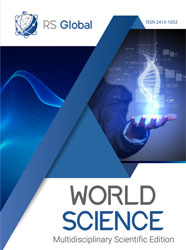ФОРМУВАННЯ У МАЙБУТНІХ ПЕДАГОГІВ ЗАКЛАДІВ ДОШКІЛЬНОЇ ТА ПОЧАТКОВОЇ ОСВІТИ ЗДОРОВ’ЯЗБЕРЕЖУВАЛЬНОЇ КОМПЕТЕНТНОСТІ
Abstract
The article reveals relevance and practical need for the formation of preschool and primary education of health care competence in future teachers. Analysed statistical data from the Ministry of Health regarding health status of children aged 0-17; a steady tendency was found for an increase in the number of children with diseases of different genesis. The experience of work of the Khortytsia National Academy of Pedagogy on the formation of preschool and primary education of health-saving competence in future teachers is presented. On the basis of generalisation of theoretical and methodological principles of professional training in future teachers of preschool and elementary education institutions, a practical-oriented approach to the system formation of health-saving competence is created by creating in the college a health-friendly environment.
References
Здоров’язбережувальні технології в освітньому середовищі: колективна монографія / за заг. ред. Л.М. Рибалко. Тернопіль : Осадца В.М., 2019. 400 с.
Індекс здоров’я. Україна–2018: Результати загальнонаціонального дослідження / укл. Степурко Т.Г. та ін. Київ, 2018. 175 с.
Постанова Кабінету Міністрів України «Про затвердження Державного стандарту базової і повної загальної середньої освіти» від 23 листопада 2011 р. No 1392. URL: https://zakon.rada.gov.ua/laws/show/1392-2011-%D0%BF (дата звернення 20.03.2020).
Щорічна доповідь про стан здоров’я населення, санітарно-епідемічну ситуацію та результати діяльності системи охорони здоров’я України. 2017 рік / Укр. ін-т стратег. дослідж. МОЗ України ; редкол.: П. С. Мельник [та ін.]. Київ : Медінформ, 2018. 458 с.
Хольченкова Н. Сучасні підходи до інтерпретації поняття «здоров’язбережувальна компетентність» в умовах реформування системи освіти України // електронна версія URL: http://www.pulib.sk/web/kniznica/elpub/dokument/Bernatova 9. С. 218-223 (дата звернення 20.03.2020).
Views:
323
Downloads:
235
Copyright (c) 2020 The author

This work is licensed under a Creative Commons Attribution 4.0 International License.
All articles are published in open-access and licensed under a Creative Commons Attribution 4.0 International License (CC BY 4.0). Hence, authors retain copyright to the content of the articles.
CC BY 4.0 License allows content to be copied, adapted, displayed, distributed, re-published or otherwise re-used for any purpose including for adaptation and commercial use provided the content is attributed.











